A dive into the world of horror cinema
This list will be similar to my previous list of top ten horror novels. In this article, I will dive into some of my absolute favourite movies in the horror genre and explain why I find them so bone-chilling.
Like novels, horror cinema has a strong centre with staples of the genre recognisable even to those who chose not to indulge. Everyone recognises Freddy’s finger-knives, or Michael Myer’s mask, these have become artefacts, recognised by passive onlookers and worshipped by the faithful.
Always a genre to push boundaries, not all of the movies on this list might be considered classic or traditional horror. It is the hybridity of the genre that makes it so wonderful to explore. For example, Alfred Hitchcock’s Psycho is widely regarded as one of the greatest movies ever made and yet it contains no vampires, ghosts, ghouls, werewolves or zombies. Horror is a celebration of the unexpected and that which goes against the grain. So, strap in for a thrill ride and enjoy my top ten horror movies of all time.
Number 10 – Evil Dead (2013)
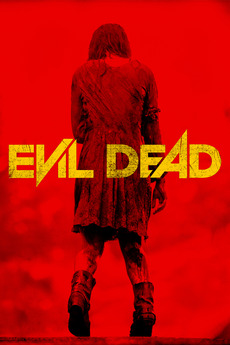
A controversial first choice, 2013s Evil Dead was – in my opinion – a far superior film to the cult classic original. The film manages to pull off the miracle of filling an hour and a half with entertainment without the venerable Bruce Campbell (baring a very brief cameo after the end credits).
The 2013 reboot of the franchise eschews the campier elements of the original trilogy in favour of a grittier tone that works wonderfully to reinvent the series. The latest instalment also amps up the body horror, providing some truly grisly imagery that lingers long in the memory. Practical effects reign supreme also, with the blood and gore looking excellent and realistic.
In terms of narrative, Evil Dead inserts doubt that propels much of the early scares. Protagonist Mia has come to her cabin to overcome drug addiction, and after her possession, most of the early supernatural occurrences and her strange behaviour are chalked off by her friends as effects of her rehabilitation, allowing the audience to feel sympathetic for Mia’s plight while also creating wonderful dramatic irony as we ponder the true cause of the strange events.
While Mia is an engaging character, the others are, admittedly, cardboard thin, their motivations are simple and their characters relatively uncomplex. From the beginning, it is clear that they are fodder for the demonic forces to come. Yet, the effects and scares remain more than enough to cement Evil Dead as a modern horror classic.
Number 9 – The Descent
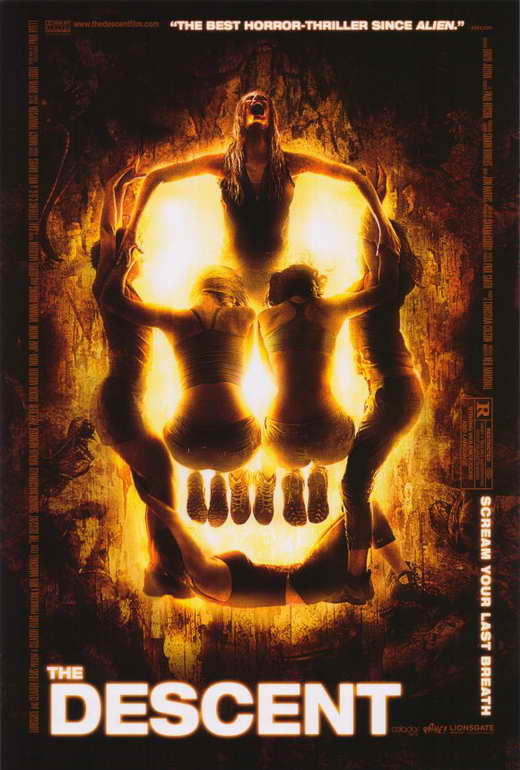
The Descent has fallen under the radar for both casual fans and enthusiasts alike. Released in 2005, The Descent follows a group of women who, while on an expedition to a newly discovered cave system, encounter a race of man-eating humanoid monsters who use sound to navigate through the darkness. For the group, a tense battle ensures as they must try to outwit the creatures and escape with their lives.
One of the first films on this list to place more importance on the atmosphere of the flick that gore or jump-scares, The Descent is an exercise in oppressive and claustrophobic tension even before the more fantastical elements of the film are introduced. As the women squeeze through the tiny crevices of the cave system, the use of camera angles and tension created through dialogue and storytelling become insignificant when the group are best by the Crawlers, creating an overwhelming sense of dread as the senses are assaulted from every angle. The beauty of the film comes from the fact that the monsters could be removed entirely, and it would still be uncomfortable.
With excellent makeup, prosthetics and practical effects used to create a convincing environment and antagonist, The Descent will immerse any viewer with ease, we are in for as just a wild ride as the characters. The characters are believable and easy to invest in and a lack of soundtrack heightens the sense of realism. A near-perfect horror movie where everything comes together to make a beautiful – albeit terrifying – whole.
Number 8 – Halloween (1977)

Is there a more iconic horror movie that Halloween? The face of an entire holiday, Michael Myers stands shoulder to shoulder with Freddy Krueger, Jason Vorhees, Chucky and Ghostface. When it comes to the slasher movie subgenre, there is perhaps only one film more iconic and technically sound that Halloween. But we shall come to that one later.
A staple of Horror, Halloween has been credited for creating so many of the tropes and characteristics that have come to define the genre for so long while borrowing from earlier genres of film and literature. The characters, Laurie Strode, the virginal ‘final girl’, Doctor Loomis, the wise nemesis, hellbent on catching the killer, and finally Michael Myers himself, the Shatner mask-wearing jumpsuit-clad maniac who stalks baby sitters one Halloween night. Each and every one of those characters are iconic in their own right, and so effectively written that we are still talking about them decades on.
Made on a shoestring budget, every aspect of the film comes together perfectly, from the acting to the venerable musical score, Halloween feels expertly crafted. Its beauty is ultimately in its simplicity, with characters who are easy to invest in (or fear) and a narrative free of the more farcical aspects of later Halloween sequels or other slasher franchises such as A Nightmare on Elm Street. Halloween is a simple yet effective exercise in late twentieth-century terror.
Number 7 – Carrie (1976)

A masterwork from Brian De Palma and adapted for the screen from Stephen King’s excellent debut novel, Carrie is, at heart, a morality tale. It teaches us to take care, and be wary that someone, no matter how timid, could be close to the edge. Telling the story of Carrie White, De Palma’s film sees the hugely unpopular Carrie bullied and ostracized by her high-school peers, culminating in a horrific and embarrassing prom night prank. However, little do her tormentors know, Carrie has a power unlike any they could imagine. Able to move objects with her mind through the power of telekinesis, Carrie decides to exact her revenge on those who have mercilessly teased her throughout her life.
The story that launched Stephen King’s career, Carrie is remembered for its naturalism, with the depictions of bratty, narcissistic teenagers more unsettling than any of the otherworldly occurrences that take place throughout the film. The brutality of Carrie’s peers in the opening scene alone in difficult to watch, as they berate her for having her period for the first time while in the shower (a nod to another famous film that we will discuss later).
The scene that Carrie is perhaps best remembered for is the now immortal prom segment, in which the titular character is pushed to her limits and finally exacts her revenge on those who have tortured her for so long. What makes this moment more horrifying than any other in the film is that we the audience find ourselves rooting for the character. We secretly don’t want to admit it to ourselves, but we are enjoying the fact that we can finally see the downtrodden and oppressed rise up and overthrow those who would seek to tread on them.
Carrie is as much an exercise in catharsis as it is in horror and is the first example of Stephen King’s excellent characterisation throughout his novels. With this movie, the very real horrors on show combined with the more fantastical elements make for an entertaining and surprisingly poignant film that punches above its weight to stand amongst the giants of the genre.
Number 6 – The Fly (1986)

Certainly not the first remake on this list, nor the last, David Cronenberg’s 1986 film is a remake of the 1958 classic and is a rare instance of a remake done right. With an intriguing set-up already in place, the 1986 movie was able to use the effects of it’s time to make a gruelling, believable monster science-fiction movie akin to those of the Golden Age in the 50s. Renowned for its body horror and performance by a young Jeff Goldblum, The Fly was a surprising hit and one of the most memorable genre films to come out of the 1980s.
Made famous by the gruesome body horror effects designed by Chris Walas, Goldblum’s Seth Brundle turns ever so slowly into a monstrous human-insect hybrid after an accident involving a normal housefly and a teleportation device of Brundle’s making. The hideous transformation is what puts this film on the map. However, it is not only the grotesque imagery of a man’s body agonisingly deteriorating that gives The Fly its chills, but it is also the act of watching a man’s hubris overcome him and tear him down until he becomes something inhuman, destroyed and reborn as something new by the science he assumed mastery of.
While not a perfect movie, The Fly is solid in almost every aspect, with acting performances, special effects, direction and the narrative all satisfying. With practical effects that still hold up in the twenty-first century, The Fly is a film that will continue to horrify and delight for decades to come.
Number 5 – The Hills Have Eyes (2006)
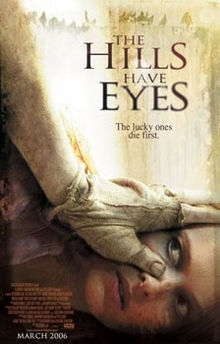
The last remake on this list, Wes Craven’s second attempt at The Hills Have Eyes is, in my opinion, an underrated gem in the genre. While the original is a horror classic and has earned respect for its nuanced examination of the Vietnam War, the remake aims for a more in-your-face outing, with less focus on subtext and more onus on gore and isolation. Like The Fly, what truly elevates The Hills Have Eyes above mediocrity is it’s make-up and practical effects, with little reliance on CGI to dampen the films verisimilitude.
Set in the isolated flats of the New Mexico desert, a family vacationing across America find themselves stranded in the unfortunate company of a clan of cannibals, mutated by inbreeding and nuclear tests in the region. What begins as an innocent excursion to California ends in a Hellish battle for survival. Not holding back on the gore or physical and sexual assault, The Hills Have Eyes truly harkens back to the exploitation genre of the 1970s from which it arose. Yet, despite all the typical imagery expected from a film of the genre, there are regular sweeping shots of the desolate surroundings to remind us of the isolation the characters face. It is this cold reality that creates much of the tension – even without the threat of cannibals, death still looms large over the characters as they battle thirst and hunger.
While the anti-nuclear message is abundantly clear and could be far less blatant, the design of the antagonists – their bodies marred by radiation exposure – is excellent. They are, simply put, hard to look at. Inspiring both disgust and fascination in equal measure they are a refreshing spin on the traditional masked-clad slasher villain. While their motivations are simple, their presence is intimidating and fuels most of the terror throughout the film. The prosthetics and design of the characters, combined with a genuine sense of isolation created by the cinematography, makes The Hills Have Eyes a memorable entry in the Horror genre.
Number 4 – REC
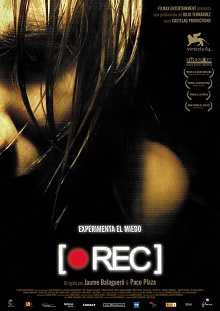
I love zombies, and it was a challenge not to give every spot on this list to my favourite undead flicks. I have managed to narrow down this list to just two, with an honourable mention going to the 2004 remake of Dawn of the Dead. However, when it comes to the sheer sense of dread created by the inexorable march of death – or a fate worse than – then REC is unparalleled in the genre. While no means original in its format as a found-footage movie when released in 2007, REC raised the bar for what could be expected from a found-footage movie, combining the style with the zombie sub-genre was a masterstroke as it allowed for an intimate, personal, visceral experience that left audiences horrified.
Following news reporter Angela Vidal and her cameraman Pablo, REC sees the pair trapped in an apartment building with a team of firemen and the residents while a mysterious virus that turns its victims in rabid monsters courses through the building. While no means original in premise, REC excels in its execution of tired ideas. With the combination of The Blair Witch Project’s style and the claustrophobia of Alien, REC creates a nightmare that we never wake from. From the moment our characters enter the building to Angela’s final scream in the attic there is no let-up, with few moments of brevity or humour. REC takes itself very seriously and insists that you do the same.
While using gore and jump scares sensibly, the movie doesn’t fall victim to too many cliches. With the scenario of being forcibly trapped in a building with no escape or explanation accounting for much of the film’s oppressive atmosphere, like The Descent before it, the monster could be removed completely and the film would still feel just as unnerving. With strong performances, hybridity in execution and style and a very believable scenario, REC is easily one of the greatest horror films of the early twenty-first century.
Number 3 – The Exorcist
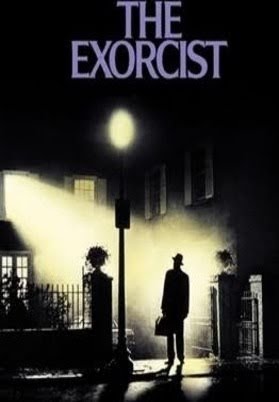
By now The Exorcist has become one of the giants of the genre, sitting comfortably among others in the genre while still managing to stand out. The Exorcist, based on Willian Peter Blatty’s book of the same name follows young Regan Macneil as she becomes possessed by the demonic Pazuzu and, with the help of two priests and her mother, must fight for her soul. A tale of good versus evil and superstition versus science, the film is filled to the brim with horrific imagery and scares reliant upon the investment of the audience in the characters. The Exorcist excels not only by proving a bounty of scares but by also telling a gripping story.
Of the imagery found throughout the film, most memorable is perhaps the gruesome 360-degree headspin or the now-famous crab-walking scene. Both of these scenes, among many more continue to shock and terrify audiences with every viewing. And yet, the most cringing and difficult scenes are those in which the science of the 1970s searches for a rational explanation to the possessed Regan’s behaviour. The operations and procedures performed are far more barbaric and unsettling than any of the supernatural occurrences throughout the film. The juxtaposition of science and superstition reveals similarities between the two, managing to comment on how uncivilised our civilisation truly is (in the end, once science has run dry of ideas, all the doctors can suggest is a ‘witch doctor’).
Running alongside Regan’s narrative is the plot of Jesuit priest Damien Karras and his loss of faith. Struggling to come to terms with the death of his mother and his subsequent abandonment by God, Karras must put his own troubles aside to save Regan, with the help of veteran priest Lancaster Merrin, played to perfection by Max Von Sydow. The priests act as our heroes in the narrative, standing between Regan and her damnation and yet, they are not perfect, adding another level of complexity to their characters and the plot as we wonder, can these failing and imperfect heroes truly be our saviours?
With excellent acting, direction, effects and an enticing narrative provided by the source material, The Exorcist remains one of the greatest horror films ever made.
Number 2 – Psycho (1960)
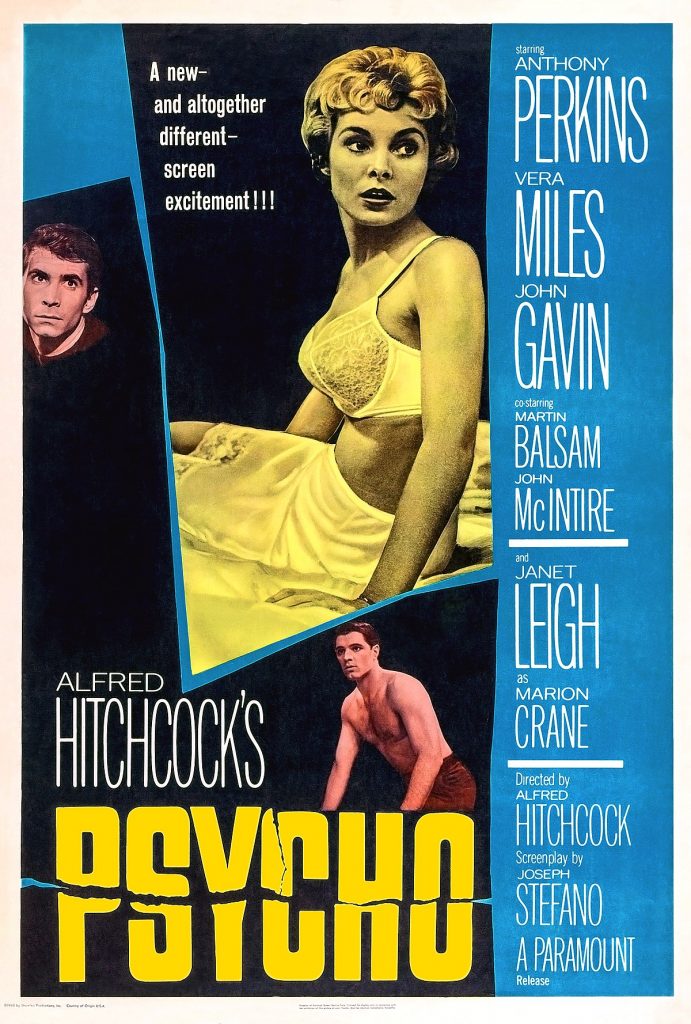
If Halloween cemented the slasher as a staple of the Horror genre, then Pyscho virtually invented it, bringing together many of the elements that have come to dominate the subgenre for decades now. Every inch of this film is now iconic. Directed by the masterful Alfred Hitchock, Psycho is packed full of intrigue and scares. Following Marion Crane, a woman on the run after stealing $40,000 dollars from a client of her boss, Marion makes the fateful decision to stop for the night at the isolated Bates Motel before returning the money the next day. There she meets affable motel owner Norman Bates, who runs the motel alone while caring for his ailing mother. However, Marion doesn’t make it through the night to return the money, for there is a killer on the loose, and the first victim of the film is Marion, caught unawares in the shower in what has become one of the most memorable and homaged scenes in movie history.
Central to Psycho is the character of Norman Bates, the boyish, lonely owner of the motel. Bates is the spectre haunting the audience, the malevolent evil hiding under a veneer of normality. Norman Bates is one of the first horror villains to present a more human evil, a far cry from the Universal Monsters of the 1930s. Gone are Dracula, Frankenstein and the Wolfman. Taking their place is a monster of the mind, partly inspired by real-life killer Ed Gein, who would also go on to inspire The Texas Chainsaw Massacre. Bates remains the template for many a horror film villain. Gaining notoriety for playing on taboo also, with crossdressing, sex out of wedlock and voyeurism all either included or alluded to throughout the film, Psycho broke boundaries as well as deliver a satisfying story.
Made in 1960, before films became reliant on special effects or had to go to other extreme lengths to be considered original, Pyscho may feel somewhat barebones to newer viewers. However, the complexity of it is nuanced and adds to the films ability to be watched again and again while still feeling intriguing and captivating. With the final reveal being both shocking and infamous, it also allows for an entirely new perspective when rewatching the film.
With the performances and direction expected from a Hitchcock film, and narrative twists unheard of in 1960 and still leant upon by today’s generation, Pyscho transcends the genre to become not only an excellent horror movie but one of the greatest movies of any genre.
Number 1 – 28 Days Later
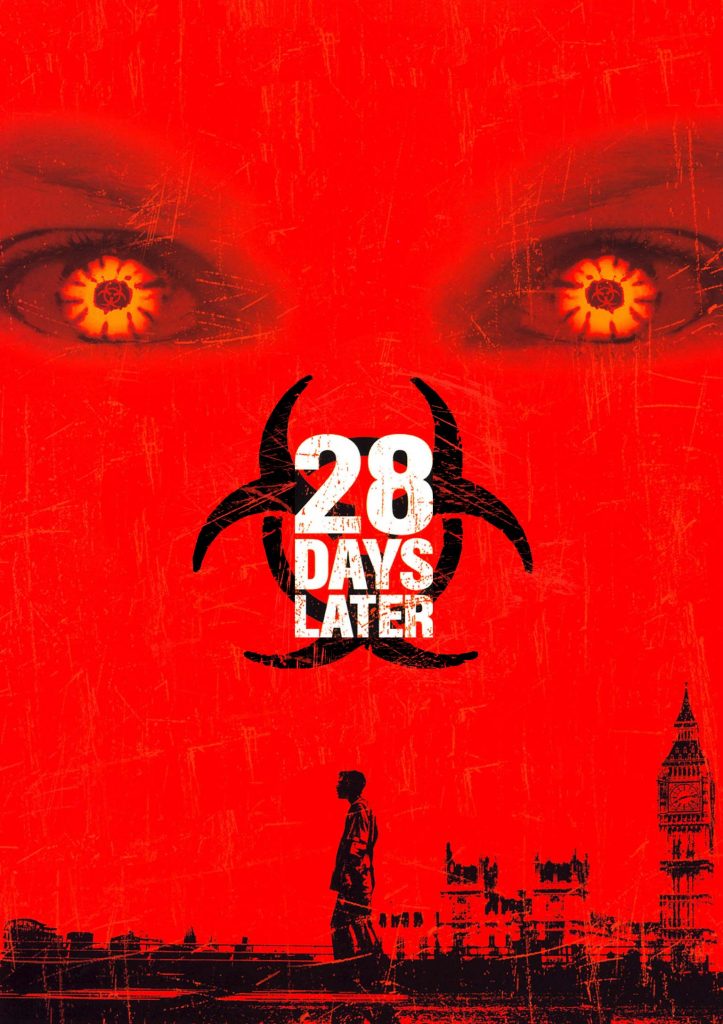
Without doubt, the greatest zombie film ever to be put to screen, 28 Days Later is a harsh, unforgiving and oppressive ride that doesn’t give audiences any time to stop for breath. From the eerie, uncanny images of a deserted London to the hectic, bloody ending, 28 Days Later is pulse-pounding yet subtle British horror at its finest.
While 28 Days Later did not invent the concept of the running zombie, it gave rise to the notion of the undead as a viral lifeform. The Rage Virus turns its victims in ravenous cannibals within seconds of exposure to the contagion, ushering in a not a shambling corpse, but a violent, energetic monster. With the zombie genre almost ready to be put to rest by 2002, Danny Boyle’s film breathed new life into subgenre and led to an explosion of interest in Zombies thereafter. With 28 Days Later to thank for AMC’s The Walking Dead, World War Z and Shaun of the Dead amongst many, many more.
As this list has hopefully elucidated, the best horror movies are not those that rely simply on making us jump, or showing us frightening or unsettling imagery, instead, they reveal a deeper more uncomfortable truth, the evils of humanity. Horror films hold up a mirror that reveals our true selves, deconstructing our notions of civilisation and modernity and reminding us that we too are still simple beasts and all have the capacity to become the monsters we so deeply fear. This is certainly true of 28 Days Later.
When our heroes think they are saved by a small band of military personnel who have survived the outbreak, their illusions (along with our own) are shattered, as the soldier’s more sinister agenda is revealed. Planning to take the women hostage and abuse them, it becomes clear that the rule of law has been completely obliterated, and even those who we are told to place our trust in can no longer be relied upon to protect our best interests. With our characters completely alone and facing both the dangers of the infected and evils of the living, the sense of isolation and desperation is palpable and builds steadily to the film’s climax, which, surprisingly for such a dour film, ends on a hopeful note, with our heroes escaping and managing to survive by their own wit.
With a sublime combination of surface-level scares and the nuanced horror of Psycho, 28 Days Later is, without doubt, my favourite horror film of all time, both terrifying and entertaining in equal measure.